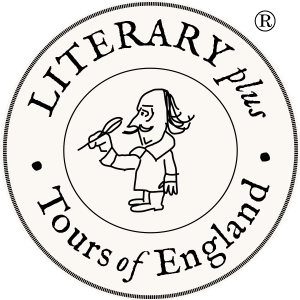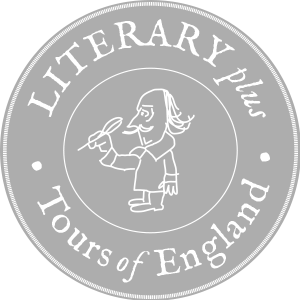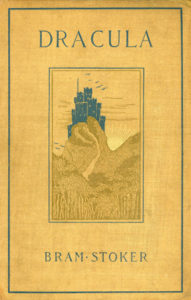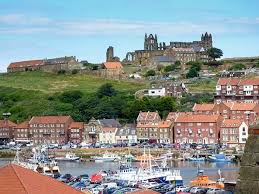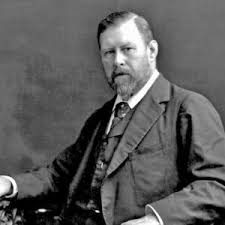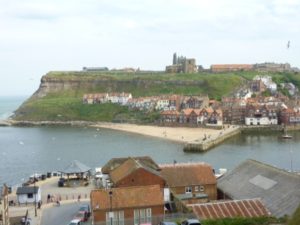09 Aug Bram Stoker’s Whitby
“There are mysteries which men can only guess at, which age by age they may solve only in part.” – Bram Stoker
Literary Whitby
It can be argued whether or not Abraham (Bram) Stoker is a major figure in the history of English literature, despite the extraordinary success of Dracula (1897). Even despite the fact that he wrote twelve other novels, three collections of short stories, a number of uncollected short stories, numerous articles and works of non-fiction. But including Stoker in a literary tour of England gives you (as it gave Judy and me) reason to travel to Whitby, a lovely small town on the spectacular north Yorkshire coast. Actually, Whitby drew quite a few literary visitors apart from Stoker, including Elizabeth Gaskell, Charles Dickens and Lewis Carroll. It can even be said that the earliest English literature comes from Whitby since Cædmon (c 657-684), the first known Anglo Saxon poet, was a monk in the order that used Whitby Abbey for many years. In 1898 Cædmon’s Cross was erected in his honor in the graveyard of St Mary’s Church.

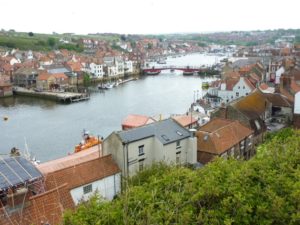
Stoker was born in Clontarf on the outskirts of Dublin in 1847 and spent the first 30 years of his life in Ireland. After marrying in 1878 he moved to London and settled there. He became the personal assistant of Sir Henry Irving, the most famous English actor of his time, and business manager of the Lyceum Theatre, which Irving owned. He traveled extensively with Irving (but never to Romania, the legendary home of Dracula). He especially enjoyed the United States, where he was very popular: he was twice invited to the White House, where he met Presidents William McKinley and Theodore Roosevelt. Stoker died in London in 1912 at the age of 64.
Stoker and Whitby
It was in 1890 that Stoker visited Whitby, where he was inspired (in part at least) to create Dracula. It’s said that he would sit on the West Cliff looking across the busy fishing port below him to Whitby Abbey on the East Cliff, which he described in Dracula as “a most noble ruin, of immense size, and full of beautiful and romantic bits”. An unpretentious memorial bench was placed on the West Cliff in 1980. Judy and I sat there and enjoyed the marvelous view, just as Stoker had done almost 130 years before!
Whitby Abbey, now looked after by English Heritage, is an awesome sight. It was home to one of the most important religious communities to be dissolved by Henry VIII in the 16th Century. The first monastery was established in about 657, but what we now see is the shell of the 13th Century church of the Benedictine abbey founded after the Norman Conquest of 1066. The Abbey can be reached by road, preferably by bus, or by climbing the 199 steps from the town.
Captain Cook in Whitby
Whitby is also famous for its association with the great explorer Captain James Cook. Indeed Cook’s ships – HMS Endeavour, HMS Resolution, HMS Adventure and HMS Discovery – were all built in Whitby as colliers, later purchased by the Royal Navy, refitted and renamed. Endeavour was the ship that Cook commanded on his first voyage to the south Pacific, during which he sailed around New Zealand and charted it for the first time. The well-organized and fascinating Captain Cook Memorial Museum is located in the house in which the young Cook lived as an apprentice seaman and to which he returned after his historic first voyage. Cook is also commemorated by a splendid bronze statue mounted on a high plinth on the West Cliff.
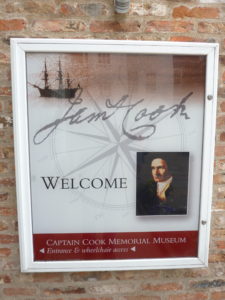
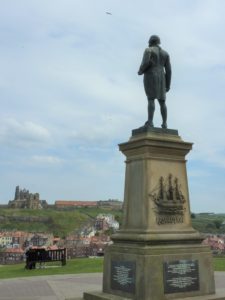
Getting to Whitby
Whitby can be accessed by major roads from the west, south and south-east, each traversing a different area of the gorgeous North York Moors National Park. However, I love historic railways. So Judy and I traveled to Whitby by steam train from Pickering (at the southern boundary of the Park) on the North Yorkshire Moors Railway: a gentle ride of almost two hours through magnificent scenery and past picturesque villages. The steam locomotives, vintage rolling stock and well-kept stations have been used in many movies and TV shows. There’s even a literary connection of sorts inasmuch as Goathland Station was Hogwarts Station in the Harry Potter movies.


A final word about Bram Stoker and Dracula: Dracula has been a popular character in countless feature films and television programs, most of them having little or nothing to do with Stoker’s novel. The most faithful adaptation is Bram Stoker’s Dracula (1992) directed by Francis Ford Coppola and starring Gary Oldman as the troubled Count.
If you’re thinking of visiting Whitby, including the Abbey, allow at least a day. Be sure to outfit yourself with good walking shoes, a light jacket and a yen for the macabre. Looking for more to do in the area? Consider the North York Moors, 554 square miles of glorious moorland and spectacular coast. To visit Whitby, the North York Moors and other fascinating sites associated with your favorite writers, plan your itinerary here.
